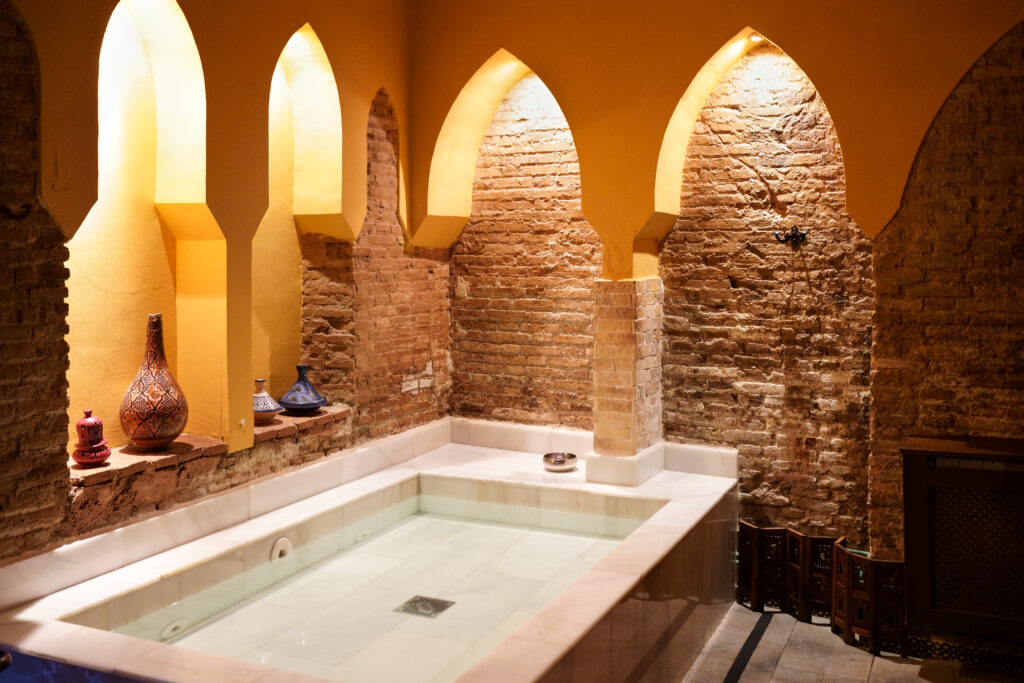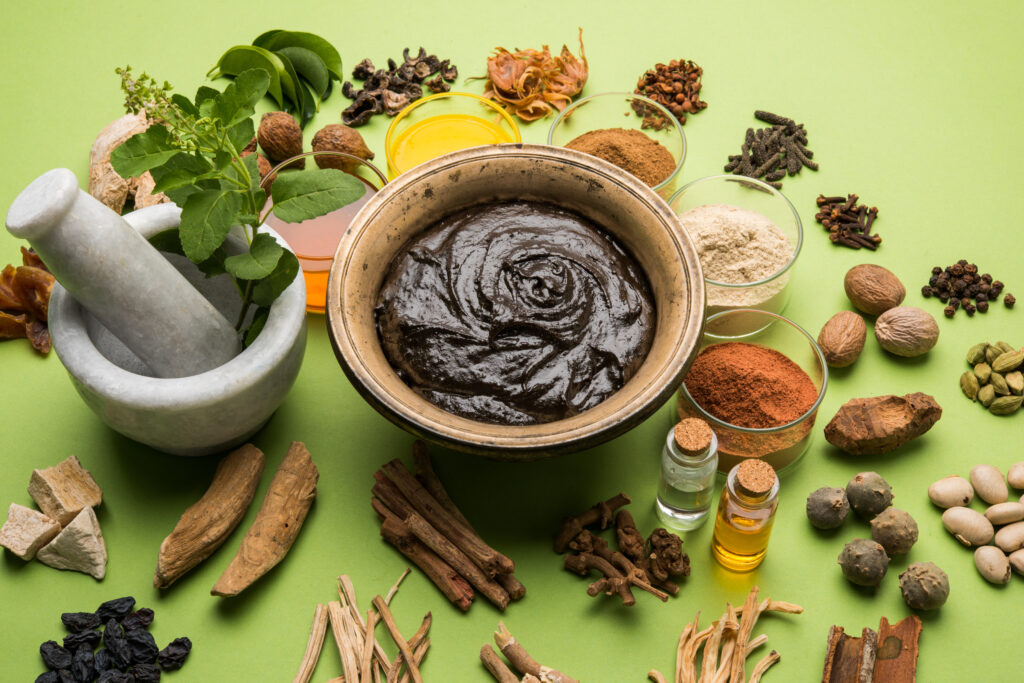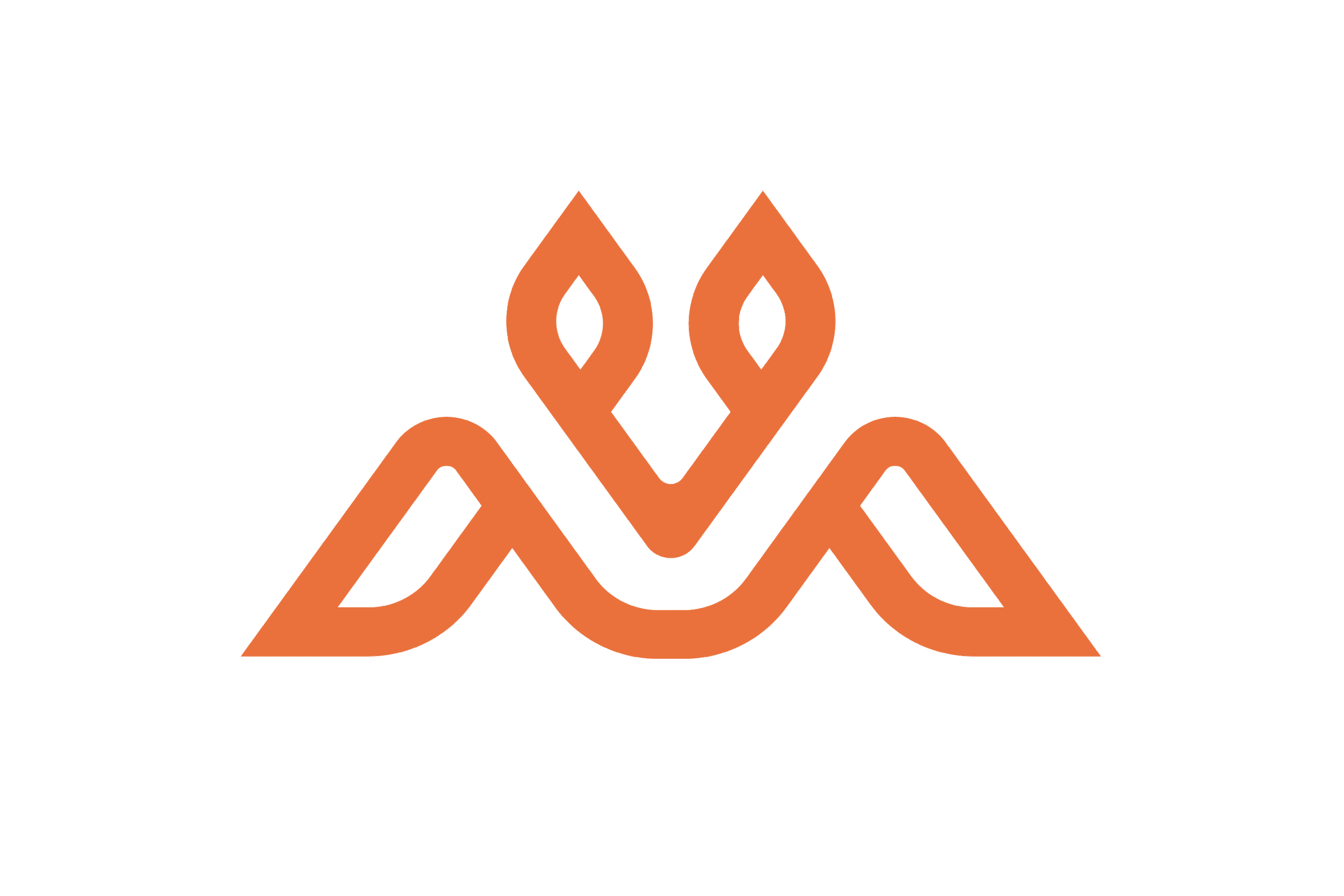Growing up in Morocco, the weekly Hammam ritual marked my childhood Saturdays with sensory magic. As afternoon light spilled across our home, my mother, aunts, and I would prepare our treasured bath elements. We blended fragrant herbs for scrubs, selected precious argan and orange blossom oils, and prepared for transformation.
Moroccan bath are pure magic for your skin and your soul. Nothing melts away stress and grime like these traditional steam baths. Back home, women carve out two hours weekly for this ritual; believe me, it’s worth every minute. You walk out with glowing skin, relaxed muscles, and a renewed spirit.
Every woman deserves to feel this amazing. That’s why I’ve found a way to recreate the experience at home. My DIY Moroccan Bath brings that same Hammam magic to your bathroom, and I’m excited to show you how.
Table of Contents
What is Moroccan Bath (Hammam) Treatment?
The Moroccan Bath, also known as Hammam Treatment, is a traditional practice in Morocco where both men and women visit public baths to experience its cleansing and skin-purifying benefits.
Moroccan hammams are ubiquitous, with one found in nearly every district. These traditional bathhouses are a staple of Moroccan culture, offering a unique blend of cleansing and relaxation that has become an integral part of the country’s beauty rituals. As a result, many women in Morocco opt to visit a hammam instead of a conventional spa, as they can receive all the treatments they need.

How Much Do Hammams Cost In Morocco?
Visiting a traditional Moroccan Hammam in Morocco is an affordable luxury, with prices starting from under $5 per person, making it an incredible value for the experience.
How To Make A Moroccan Bath At Home As Beginner
Ready to refresh your body and clear your mind? Here’s how to create your own Moroccan Hammam experience at home, step by step.
Step 1: Apply An Oil Treatment or Mask To Your Hair
Begin by applying a Moroccan hammam oil treatment to your hair. To prepare for a Moroccan bath, nourishing your hair with the oil treatment and allowing it to sit for a few hours covered with a warm towel is essential.
Morocco’s go-to hair treatment is Premium Moroccan Argan oil, renowned for its exceptional nourishing properties that cater to all hair types. To reap its benefits, Moroccan women typically apply the oil to their locks shortly before bathing, allowing it to absorb into the hair and scalp thoroughly. For optimal results, wrap your hair in a towel and let it.
Before going to the Hammam, our grandmothers had special hair care rituals rooted in Moroccan heritage. One beloved tradition was applying a natural mask made with henna, crushed jujube leaves (sidr), rose water, and a bit of oil. This homemade treatment gently cleansed the scalp, strengthened the hair, and left it soft and shiny.
Each ingredient had a purpose. Henna helped condition and protect, sidr removed impurities, rose water soothed the scalp, and the oil added deep moisture. It wasn’t just about beauty , a moment of preparation and self-care that set the tone for the Hammam ritual ahead.
Step 2: Get Your Bathtub Or Shower Ready And Create A Steamy Environment
Once your hair treatment has deeply penetrated your hair and scalp, you can start preparing your Hammam bath.
The goal is to get it as warm and steamy as possible. To produce enough steam, close the doors and let the extra hot water flow for at least 2 to 3 minutes until your shower gets steamy.
If you feel fancy, pour some drops of orange or lavender essential oil into the bathtub or shower.
Step 3: Prepare Your Skin With Moroccan Black Soap
You can proceed with your Hammam ritual when your shower is warm and steam-filled. Step into the shower and then focus on opening up your skin pores. To do this, set the water to a warm temperature, stand under the stream, and let it cascade over your entire body, including your face. Spend 2 to 3 minutes doing this to open up your pores effectively.
What Is Moroccan Black Soap Made Of?
This rich, dark paste is crafted from the dried skins of olives and various plant matter. Upon application to damp skin, it transforms into a sudsy lather, priming the skin for a thorough yet gentle scrubbing. Premium black soap, formulated with wholesome ingredients, is suitable for use in most areas of the body, excluding sensitive regions.

For an extra-deep cleanse, you can enhance your Moroccan black soap by mixing it with some henna and a few drops of fresh lemon. This traditional blend boosts the soap’s detoxifying power while adding subtle brightening and softening effects to the skin.
Henna helps purify and tone, while lemon offers gentle exfoliation and a natural glow. Just be sure to avoid applying it to sensitive or freshly shaved areas, as the lemon can cause slight tingling. Massage this mixture onto your damp skin before exfoliating; your skin will feel incredibly refreshed and baby-smooth afterward.
Step 4: Clean Your Hair And Apply A Deep Conditioner
Next, wash your hair and use a deep-conditioning treatment. This easy task involves cleaning away the oil treatment and allowing the black soap
to nourish your skin further.
To cleanse your hair, use a mild shampoo and thoroughly cleanse your scalp and hair ends. After washing, follow your routine and apply your deep conditioner.
Step 5: Exfoliate With A Traditional Moroccan Tool
After the Moroccan black soap has been absorbed into your skin, preparing it for exfoliation, it’s time to remove dead skin cells gently. To do this, you’ll need a traditional Moroccan Kessa glove, also known as a Hammam scrub.
The Moroccan Kessa glove is a commonly used item in Morocco for exfoliating the skin and getting rid of dead skin cells during bathing.
The key factor is selecting the appropriate Kessa for your skin’s sensitivity level.
Massage the Kessa glove over your skin in a circular motion, allowing the gentle friction to work with the previously applied Moroccan black soap to draw out impurities and shed dead skin cells, revealing a smoother, healthier complexion that will leave you amazed.
Step 6: Apply Ghassoul Mask For A Deep Clean
The Moroccan Ghassoul Mask is made from clay sourced from the mountains of Morocco, known as the Atlas Mountains. This clay is abundant in magnesium, iron, and potassium minerals, making it a unique and beneficial ingredient. It is available in powder, solid, or paste forms.
Ghassoul has been a vital component of the traditional Moroccan Hammam ritual for centuries. Since the 8th century, women in Morocco have relied on this natural remedy to purify their skin and, in some cases, their hair, particularly those with oily locks or complexions, who swear by its remarkable benefits.
After rinsing your skin with warm water, apply the Moroccan Ghassoul paste, including your face, on your skin. Leave it on for 5-10 minutes before washing it off. You will notice that your skin feels incredibly smooth, like a baby’s.
Step 7: Rinse Your Entire Body And Apply Argan Oil Or Hydrating Cream
Rinse off the clay mask completely using warm water, making sure no residue remains. While your skin is still slightly damp, it’s the perfect time to lock in moisture.
Traditionally, Moroccan women use pure argan oil for this step, which is known for its deep hydration and skin-repairing benefits. But you can try another beautiful option: a blend of musk and almond oil. This combination softens and nourishes your skin and leaves a subtle, long-lasting fragrance that feels luxurious and feminine.
Musk adds a touch of sensual warmth, while almond oil provides lightweight moisture that absorbs quickly without feeling greasy. Massage it using slow, circular motions to seal all the goodness from your Hammam ritual. You’ll feel clean, glowing, and wrapped in scent — just like after a visit to an authentic Moroccan Hammam.
What are the ingredients in a Moroccan bath?
A traditional Moroccan bath includes a few key natural ingredients:
- Moroccan black soap (Beldi soap) – made from olive pulp, rich in vitamin E
- Kessa glove – a textured exfoliating mitt
- Ghassoul clay – mineral-rich clay from the Atlas Mountains
- Argan oil – profoundly hydrating and full of antioxidants
- Optional extras: henna, sidr (jujube leaves), rose water, almond oil, and musk
What is the Moroccan bath procedure?
The process involves several steps:
- Sitting in a warm, steamy environment to open the pores
- Applying Moroccan black soap and letting it sit
- Scrubbing the body with a Kessa glove to exfoliate
- Rinsing and applying a ghassoul clay mask
- Finishing with argan oil or a nourishing body cream
How often should I do a Moroccan bath?
Once a week is ideal for most people. It gives your skin time to renew and keeps your body refreshed and detoxed. If you have sensitive skin, you can start with twice a month and adjust based on how your skin reacts.
What is a Moroccan bath ritual?
It’s more than just a bath — it’s a full-body wellness experience. The Moroccan bath ritual includes deep cleansing, exfoliation, detoxification, and moisturizing. Traditionally, it’s also a social and cultural practice where women gather, relax, and connect in the steamy Hammam space.
How do beginners do a Moroccan bath?
Start simple:
- Create steam in your bathroom with a hot shower
- Apply black soap and wait 5–10 minutes
- Use a Kessa glove to scrub
- Rinse and apply a ghassoul mask
- Finish with argan or almond oil
- Take your time, and enjoy the process — it’s meant to be cleansing and calming.
Should I shave before or after a Moroccan bath?
It’s best to shave after the bath. Your skin will be softer, and your pores will be open, which makes shaving more manageable and reduces irritation. Just wait until the end, after rinsing off the Ghassoul and moisturizing.
What does Hammam mean in English?
The word “Hammam” comes from Arabic and means “bath” or “spreader of warmth.” In Morocco, it refers to traditional steam baths used for cleansing and relaxation.
What is the etiquette for Hammams in Morocco?
In public Moroccan Hammams, etiquette is essential:
- Wear modest swimwear or underwear (unless it’s a private bath)
- Bring your soap, towel, and scrub glove
- Respect others’ privacy and personal space
- Most Hammams are gender-separated, so check the schedule before you go
- It’s common to have a helper (called a kessala) if you’d like assistance with scrubbing
Final Thoughts
Bringing the Moroccan Hammam into your home is a beautiful way to care for your body and connect with tradition. With just a few natural ingredients and simple steps, you can enjoy soft skin, deep relaxation, and a touch of Moroccan magic no spa needed.

